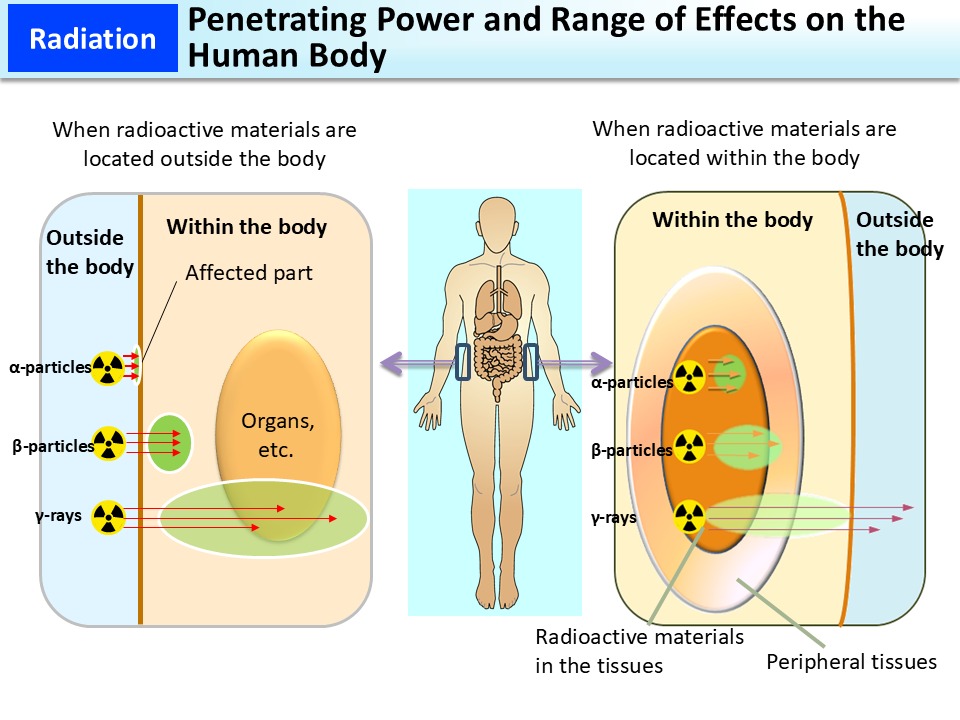Penetrating Power and Range of Effects on the Human Body
In the case of external exposure, α (alpha)-particles do not have any effect as they stop at the horny layer on the surface of the body (the penetrating distance of α-particles is about several tens of micrometers). β (beta)-particles pass through the skin (their penetrating distance is about several millimeters) and can cause burn-like symptoms when doses are very high, but do not reach deep into the body. γ-rays reach important organs deep inside the body. Thus, the major concern in the case of external exposure is with γ-rays.
On the other hand, in the case of internal exposure, all radioactive materials that emit α-particles, β-particles, or γ-rays could affect cells within the body. Given the distance α-particles travel, their effects are confined to tissues where radioactive materials exist, but due to their significant biological effects, particular caution is required in relation to internal exposure. γ-rays can affect the entire body because they travel long distances.
Some radioactive materials such as uranium, once entering the human body, may also cause metallic toxicity, etc., in addition to causing internal exposure.
(Related to p.21 of Vol. 1, “Penetrating Power of Radiation within the Body”)
- Included in this reference material on March 31, 2013
- Updated on March 31, 2021

